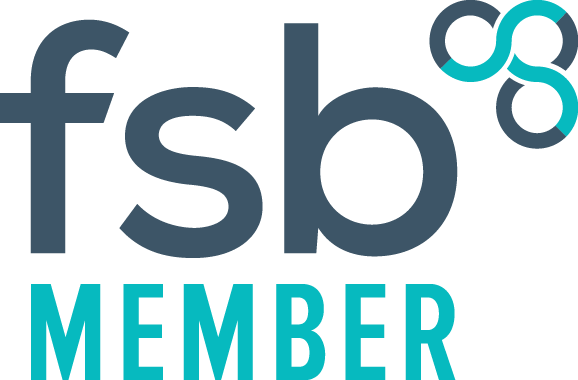Obviously, every scenario is going to be different, however there are a few principles
that need to be followed that will help in every scenario.
Strategy is vital. You need to know what you want as a business and how you are
prepared to achieve it. Business growth is critical, if you are forecasting business
growth in your business plans, then it must be reflected within this strategy, as if you
grow as you propose, and you do not have the right strategy in place then you are
setting yourself up for a bump.
Planning is the next vital step. The natural conversation from the strategy session is
the planning, the strategy is all about the theory of what you would like to happen,
but it is the planning that starts to make it happen. At this point the Workforce Plan
needs to reflect the people that are required to deliver your business plan and the
growth element within it. Recruitment is a key activity during this stage and the
approval and authorisation for heads needs to be sought.
Terms and Conditions This is the third step, but is relevant within the first two
steps, as if this step is out of line then the other seven steps will be hard to achieve
or very expensive to achieve. The most cost effective, efficient schedules /Rotas / Rosters are ones where the terms and conditions are aligned. Step six is all about flexibility and if the T&C’s are wrong then steps five and six will be useless. If you are a progressive developing company, then your workforce needs to progress and develop with you. Keeping up to date with T&C’s must be done in conjunction with your progression. Not aligning these two critical paths with cost money and efficiency.
Coverage is the next subject. It follows naturally after the first three steps as you
should now know, what your business needs to achieve and when it needs to be
achieved. You should know who your customers are going to be and when they
operate. It is pointless having everyone in 8-4 Monday to Friday if your customers
work 10-6 Tuesday to Saturday. Working out the busiest time of day is critical at this
point too, making sure your people are where you need them, when you need them.
Structure is the fifth element. Collating all the intelligence that you have learned
from the first four steps, you now need to start to build your structure to embed all
the principles collated. Structure is key! Especially if you are a seven day a week
operation. If you employ thirty people and you operate seven days a week you don’t
want to have twenty-eight of them in Monday to Friday and only leave two to cover
Saturday and Sunday. (Unless that is reflective on your business activities/tasks).
The structure is key to your business model, the first four steps should give you
enough information to make the decisions you need, during this phase.
Flexibility is number six and counting. As mentioned above, step three is key to the
realising the potential of this step. If you get it wrong in step three, then there is no
benefit to this step. This is the step where you start to save some money and get the
maximum productivity out of your Workforce. Likewise, it is the step where you can
get the reverse. Flexibility is key to your company’s success and progression, a
flexible Workforce, works well and efficiently. This flexibility works both ways too, if
you want flexibility from your Workforce, then you should be prepared to give it as
well.
Flow All Schedules Rota’s / Rosters need to flow, again especially if you are a multishift seven-day operation. You can’t have three shifts in force over seven days if they don’t
progress from day to day and week to week. A week of nights cannot go straight into
a week of mornings. Likewise, you can’t have a night shift followed by a rest day
then go into a morning shift. Although you might not be a regulated industry,
adopting regulated industries practices are generally good practice, I agree you
might not want to adopt the restrictive elements, but the work-life balanced ones are
good to have. This must be realistic with cost though. I do not support doing this if it
is at a cost to your business without any business benefit or return. (Step three is
applicable here too)
Contingency What are your contingency plans? How are you going to deal with,
Holidays, Sickness, Resignations, Promotions etc. Coverage for contingency is vital
to the smooth operation of your business. I f you know six people are going to be off
every week, how are you going to deal with that? Do you need extra people built in
at the Planning and Structure stages? Do you need a General-Purpose Relief cycle
to cover the absence? Or are you happy to just cover it on overtime? These are all
points that need to be explored and agreed before the day so there is a Contingency
plan, ensuring everyone knows what it is and what part they play in it.
Delivery All your hard work is now about to be realised. You have gone through the
pain of ensuring the Strategy is right, then put a plan together based on the Strategy,
you have considered the T&C’s, adapted the coverage, built the structure, made it as
flexible as possible, worked the attention to detail ensuring it flows, added some
contingency and signed it off for delivery.
This is where it all kicks in. You now (Hopefully) have the right people in the right
place at the right time. Working as efficiently and as cost effectively as possible.
Delivering the business aims and objectives and making your customers happy. It is
at this stage that you now need to capture the data. You have put a base structure in
place to get you here, but now the real-time reality is somewhat different. Deviation
from the base plan is where the nightmare of administration comes in. Capturing the
actual data of what happened. Is this a manual process or is it automated? Manual
processes are costly and not as accurate as they should be, at this stage an
automated process is critical to cost efficiency and accuracy.
And Finally – Continuous Improvement....
Continuous Improvement is not as bad as it sounds, especially if your processes
are automated, because it is with this data you are looking to see if any
improvements can be made, this can be highlighted automatically, and can be
reviewed realistically with the presentation of facts.
Facts are a wonderful thing, they tell you what is happening, they do not make up
any stories, they just report on what took place. Decisions should always be made
on the information and evidence available, facts provide that. The art of continuous
improvement is not to reinvent the wheel, but just inflate the tyres a little bit more. If
the wheel is not fit for purpose, then sourcing another one is obviously an option that
needs to be considered. But if all the above is working as it should be then the
continuous improvement cycle should allow you to make a few tweaks to oil the well-
designed cogs.
The processes above are supplying you with lots and lots of data, analyse this data
and be reactive within your continuous improvement cycles, you are not changing
something that’s is wrong, you are just changing something that is just not right.
Don’t change for the sake of changing but for a realisation of benefit to your
company to achieve the goals you set out with.
That is what we believe are the 10 steps to making a good schedule / Rota / Roster.
For more information, please don’t hesitate to contact us.





